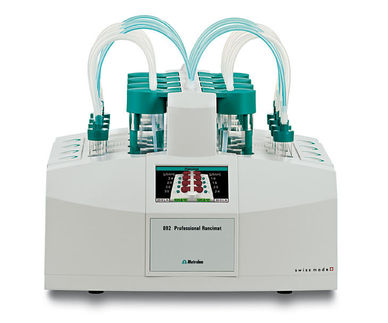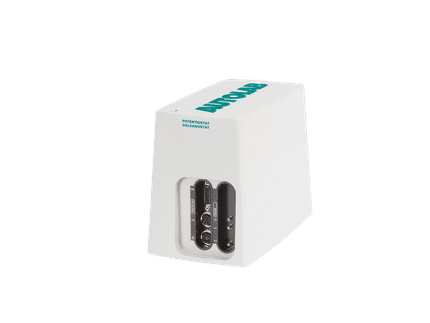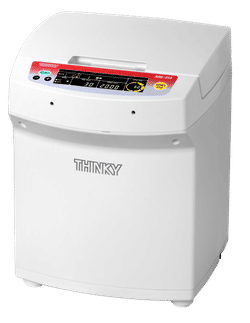| Excision repair cross-complementing rodent repair deficiency, complementation group 3 (xeroderma pigmentosum group B complementing)
|
| Identifiers
|
| Symbol(s)
| ERCC3; BTF2; GTF2H; RAD25; TFIIH; XPB
|
| External IDs
| OMIM: 133510 MGI: 95414 Homologene: 96
|
| Gene Ontology
|
| Molecular Function:
| • nucleotide binding
• DNA binding
• damaged DNA binding
• ATP-dependent DNA helicase activity
• helicase activity
• ATP binding
• transcription factor binding
• hydrolase activity
• 3' to 5' DNA helicase activity
|
| Cellular Component:
| • nucleus
• holo TFIIH complex
|
| Biological Process:
| • DNA topological change
• transcription-coupled nucleotide-excision repair
• nucleotide-excision repair
• transcription
• regulation of transcription, DNA-dependent
• transcription from RNA polymerase II promoter
• induction of apoptosis
• sensory perception of sound
|
|
| RNA expression pattern
|
|
More reference expression data
|
| Orthologs
|
|
| Human
| Mouse
|
| Entrez
| 2071
| 13872
|
| Ensembl
| ENSG00000163161
| ENSMUSG00000024382
|
| Uniprot
| P19447
| Q3TVD8
|
| Refseq
| NM_000122 (mRNA)
NP_000113 (protein)
| NM_133658 (mRNA)
NP_598419 (protein)
|
| Location
| Chr 2: 127.73 - 127.77 Mb
| Chr 18: 32.38 - 32.41 Mb
|
| Pubmed search
| [1]
| [2]
|
XPB (Xeroderma Pigmentosum B) is an ATP dependent human DNA helicase that is a part of the TFIIH transcription factor complex.
Structure
The 3D structure of the archeael homologue of XPB has been solved by X-ray crystallography by Dr. John Tainer and his group at The Scripps Research Institute.[1]
Purpose
XPG plays a significant role in normal basal transcription, transcription coupled repair (TCR), and nucleotide excision repair (NER). Purified XPB has been shown to unwind DNA with 3’-5’polarity.
Disorders
Mutations in XPB and other related complementation groups, XPA-XPG, leads to a number of genetic disorders such as Xeroderma Pigmentosum, Cockayne's syndrome, and Trichothiodystrophy.
See also
References
- ^ Fan L, Arvai A, Cooper P, Iwai S, Hanaoka F, Tainer J (2006). "Conserved XPB core structure and motifs for DNA unwinding: implications for pathway selection of transcription or excision repair". Mol Cell 22 (1): 27-37. PMID 16600867.
Further reading
- Jeang KT (1998). "Tat, Tat-associated kinase, and transcription.". J. Biomed. Sci. 5 (1): 24-7. PMID 9570510.
- Yankulov K, Bentley D (1998). "Transcriptional control: Tat cofactors and transcriptional elongation.". Curr. Biol. 8 (13): R447-9. PMID 9651670.
- Cleaver JE, Thompson LH, Richardson AS, States JC (1999). "A summary of mutations in the UV-sensitive disorders: xeroderma pigmentosum, Cockayne syndrome, and trichothiodystrophy.". Hum. Mutat. 14 (1): 9-22. doi:<9::AID-HUMU2>3.0.CO;2-6 10.1002/(SICI)1098-1004(1999)14:1<9::AID-HUMU2>3.0.CO;2-6. PMID 10447254.
- Ma L, Weeda G, Jochemsen AG, et al. (1992). "Molecular and functional analysis of the XPBC/ERCC-3 promoter: transcription activity is dependent on the integrity of an Sp1-binding site.". Nucleic Acids Res. 20 (2): 217-24. PMID 1741247.
- Weeda G, Wiegant J, van der Ploeg M, et al. (1991). "Localization of the xeroderma pigmentosum group B-correcting gene ERCC3 to human chromosome 2q21.". Genomics 10 (4): 1035-40. PMID 1916809.
- Weeda G, Ma LB, van Ham RC, et al. (1991). "Structure and expression of the human XPBC/ERCC-3 gene involved in DNA repair disorders xeroderma pigmentosum and Cockayne's syndrome.". Nucleic Acids Res. 19 (22): 6301-8. PMID 1956789.
- Weeda G, van Ham RC, Masurel R, et al. (1990). "Molecular cloning and biological characterization of the human excision repair gene ERCC-3.". Mol. Cell. Biol. 10 (6): 2570-81. PMID 2111438.
- Weeda G, van Ham RC, Vermeulen W, et al. (1990). "A presumed DNA helicase encoded by ERCC-3 is involved in the human repair disorders xeroderma pigmentosum and Cockayne's syndrome.". Cell 62 (4): 777-91. PMID 2167179.
- Wang XW, Yeh H, Schaeffer L, et al. (1995). "p53 modulation of TFIIH-associated nucleotide excision repair activity.". Nat. Genet. 10 (2): 188-95. doi:10.1038/ng0695-188. PMID 7663514.
- Maxon ME, Goodrich JA, Tjian R (1994). "Transcription factor IIE binds preferentially to RNA polymerase IIa and recruits TFIIH: a model for promoter clearance.". Genes Dev. 8 (5): 515-24. PMID 7926747.
- Maruyama K, Sugano S (1994). "Oligo-capping: a simple method to replace the cap structure of eukaryotic mRNAs with oligoribonucleotides.". Gene 138 (1-2): 171-4. PMID 8125298.
- Drapkin R, Reardon JT, Ansari A, et al. (1994). "Dual role of TFIIH in DNA excision repair and in transcription by RNA polymerase II.". Nature 368 (6473): 769-72. doi:10.1038/368769a0. PMID 8152490.
- van Vuuren AJ, Vermeulen W, Ma L, et al. (1994). "Correction of xeroderma pigmentosum repair defect by basal transcription factor BTF2 (TFIIH).". EMBO J. 13 (7): 1645-53. PMID 8157004.
- Schaeffer L, Moncollin V, Roy R, et al. (1994). "The ERCC2/DNA repair protein is associated with the class II BTF2/TFIIH transcription factor.". EMBO J. 13 (10): 2388-92. PMID 8194528.
- Guzder SN, Sung P, Bailly V, et al. (1994). "RAD25 is a DNA helicase required for DNA repair and RNA polymerase II transcription.". Nature 369 (6481): 578-81. doi:10.1038/369578a0. PMID 8202161.
- Vermeulen W, Scott RJ, Rodgers S, et al. (1994). "Clinical heterogeneity within xeroderma pigmentosum associated with mutations in the DNA repair and transcription gene ERCC3.". Am. J. Hum. Genet. 54 (2): 191-200. PMID 8304337.
- Scott RJ, Itin P, Kleijer WJ, et al. (1993). "Xeroderma pigmentosum-Cockayne syndrome complex in two patients: absence of skin tumors despite severe deficiency of DNA excision repair.". J. Am. Acad. Dermatol. 29 (5 Pt 2): 883-9. PMID 8408834.
- Blau J, Xiao H, McCracken S, et al. (1996). "Three functional classes of transcriptional activation domain.". Mol. Cell. Biol. 16 (5): 2044-55. PMID 8628270.
- Iyer N, Reagan MS, Wu KJ, et al. (1996). "Interactions involving the human RNA polymerase II transcription/nucleotide excision repair complex TFIIH, the nucleotide excision repair protein XPG, and Cockayne syndrome group B (CSB) protein.". Biochemistry 35 (7): 2157-67. doi:10.1021/bi9524124. PMID 8652557.
- Hwang JR, Moncollin V, Vermeulen W, et al. (1996). "A 3' --> 5' XPB helicase defect in repair/transcription factor TFIIH of xeroderma pigmentosum group B affects both DNA repair and transcription.". J. Biol. Chem. 271 (27): 15898-904. PMID 8663148.
|







